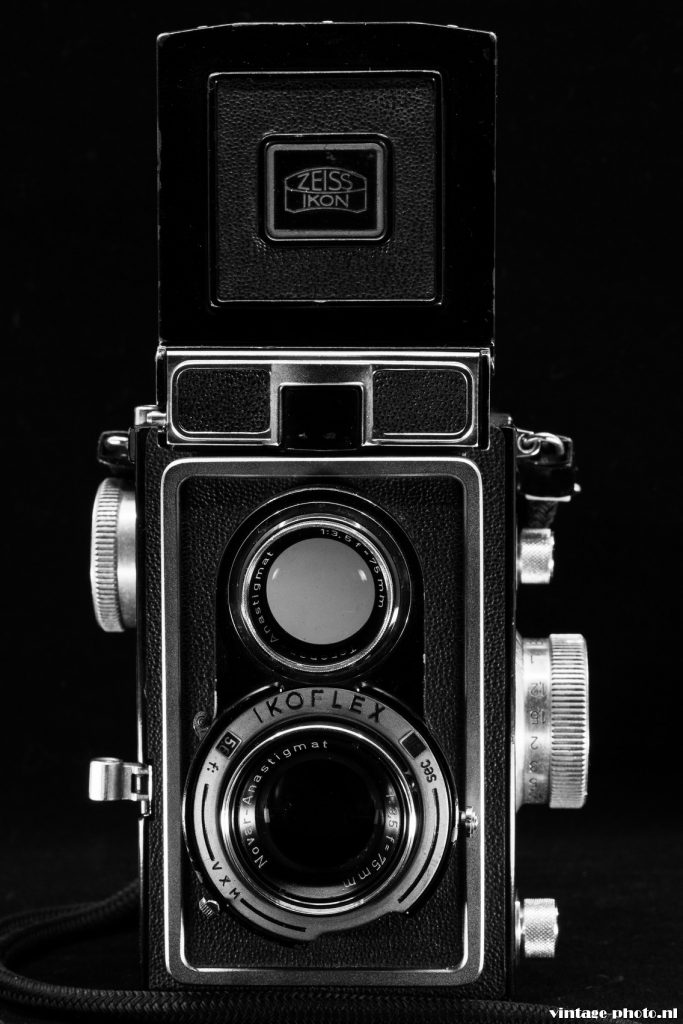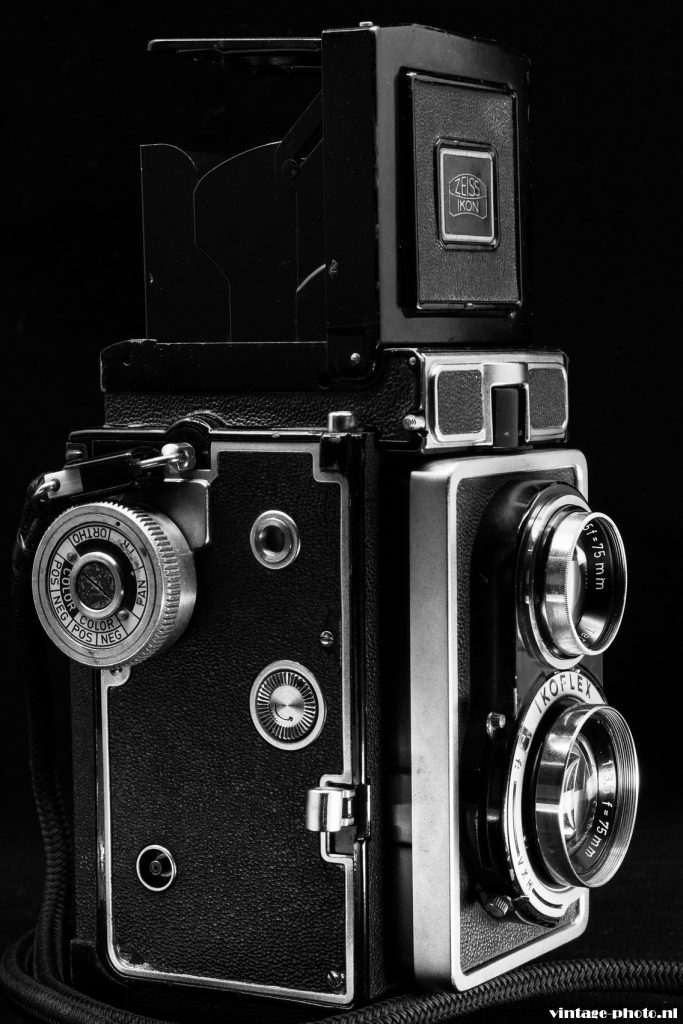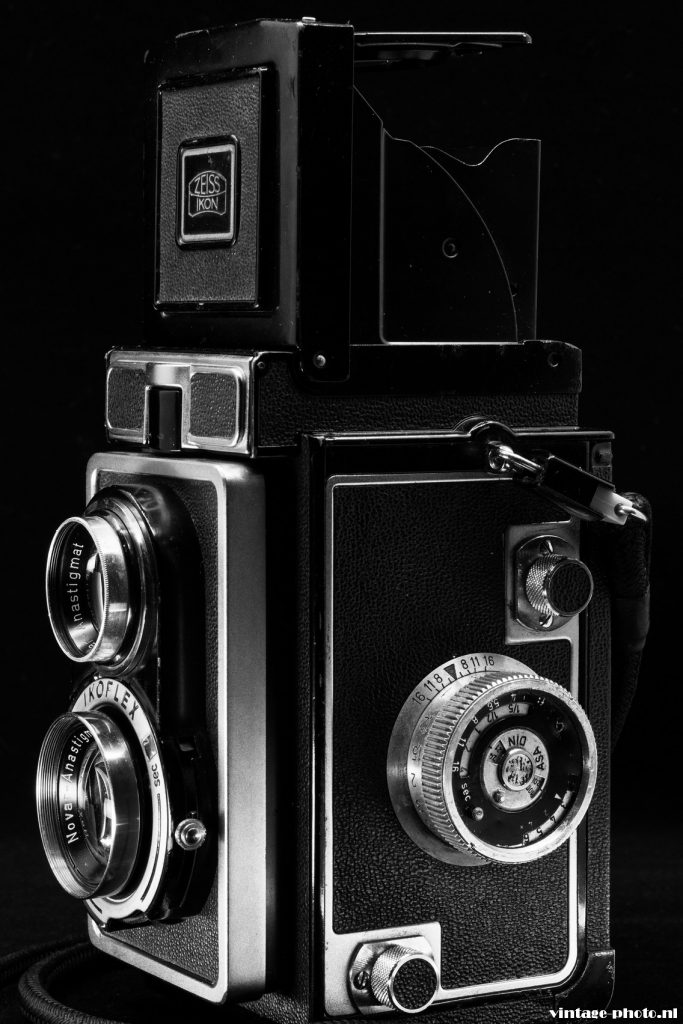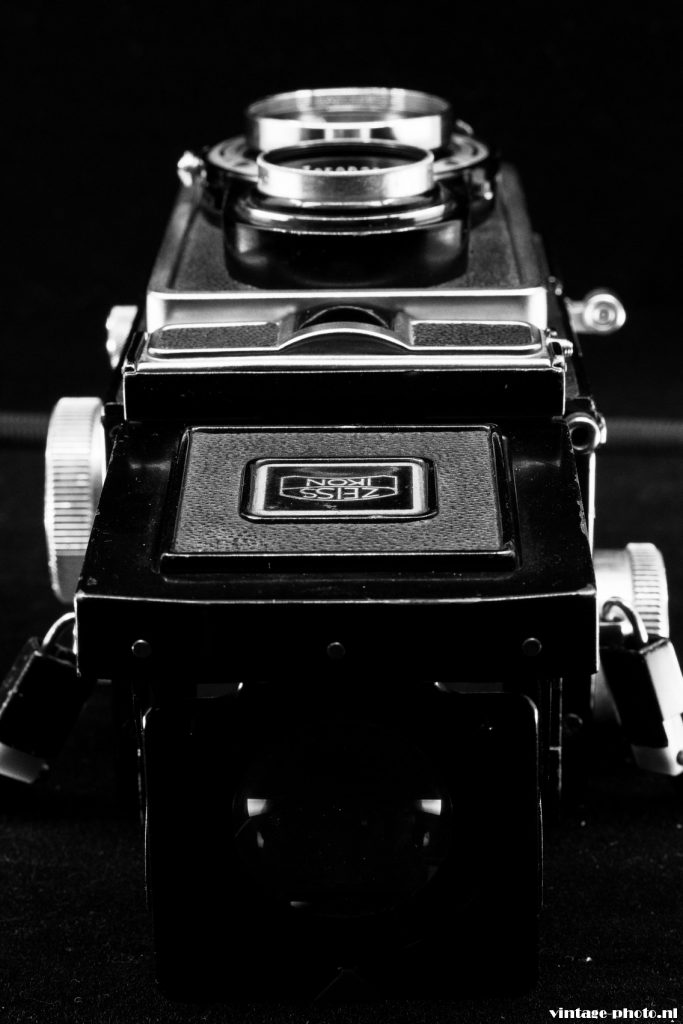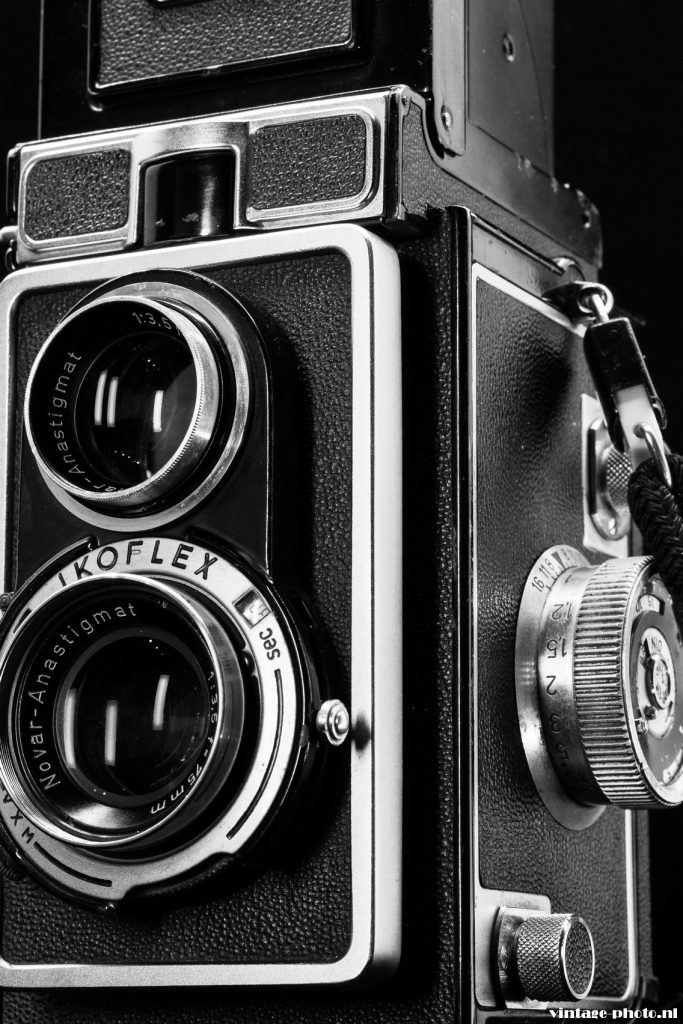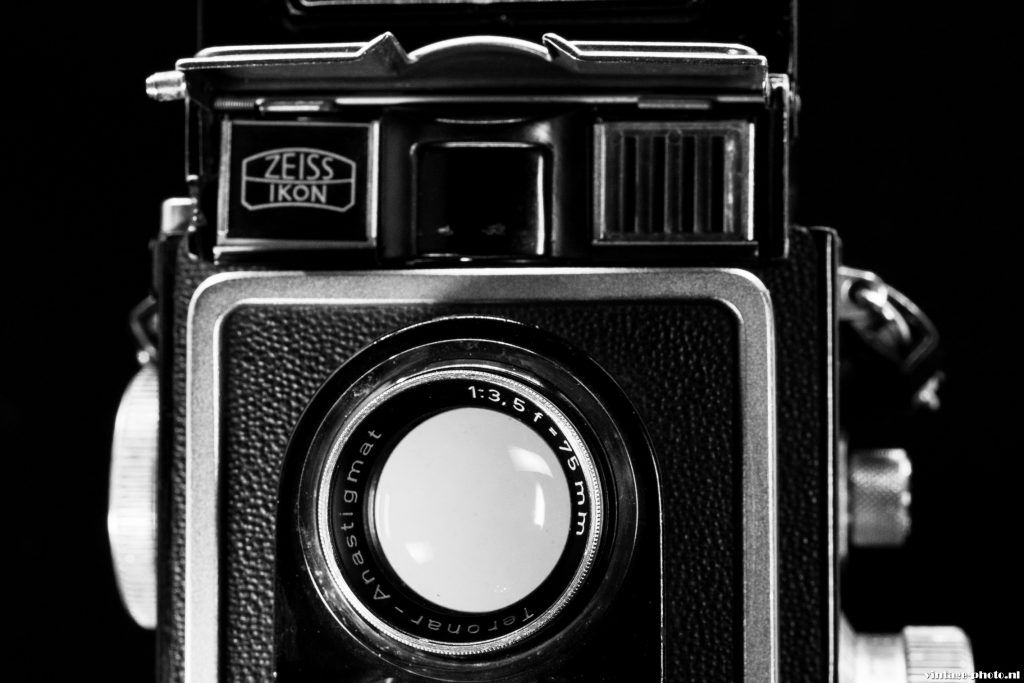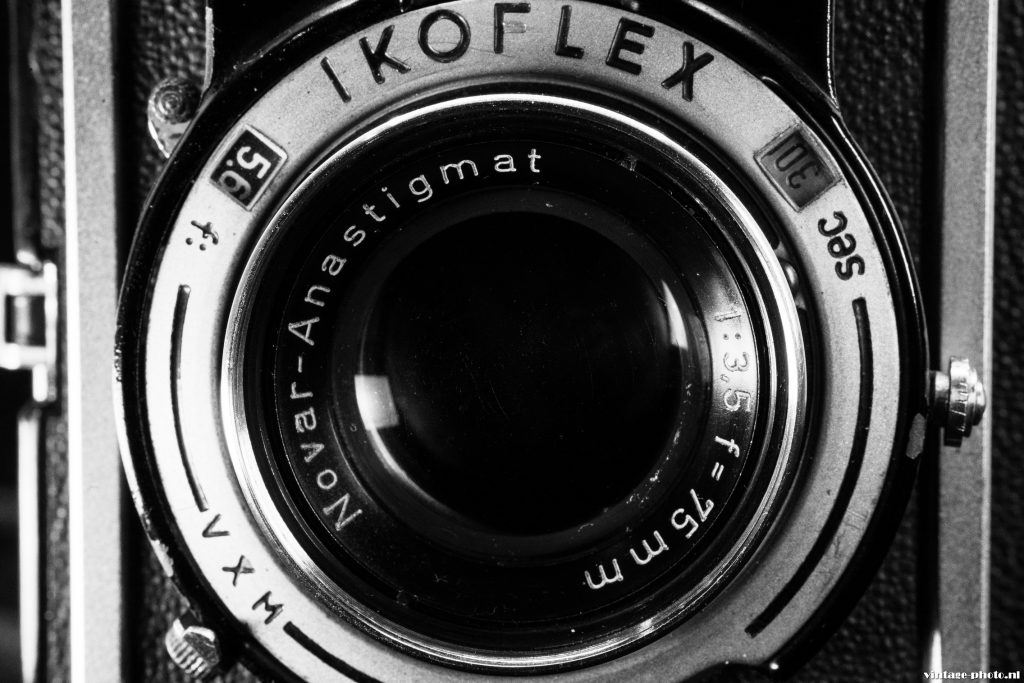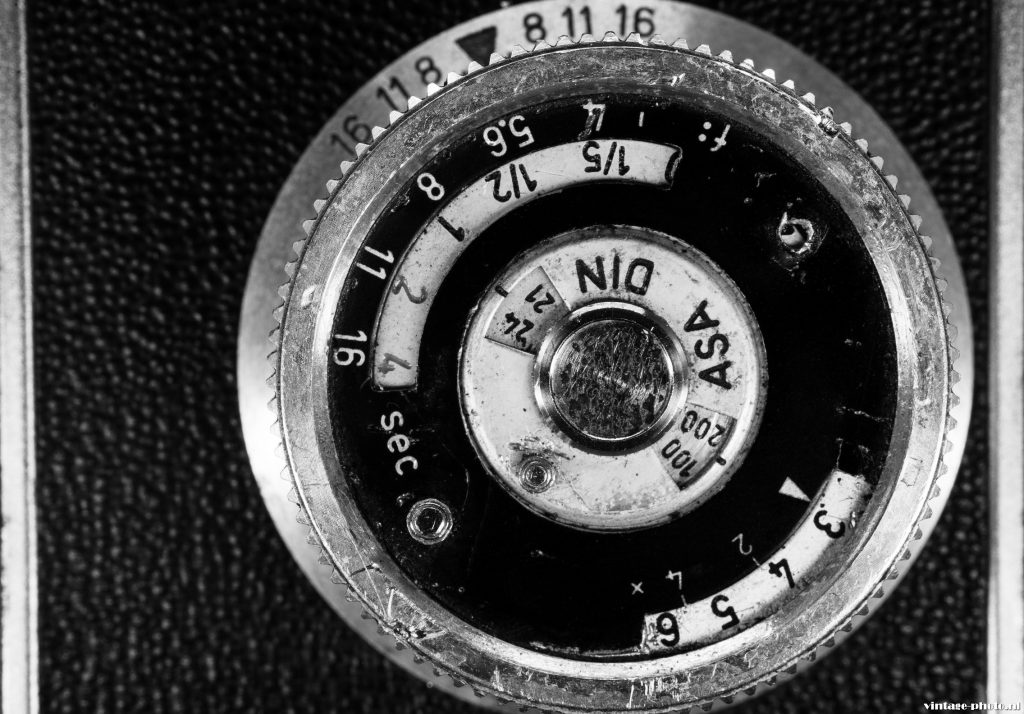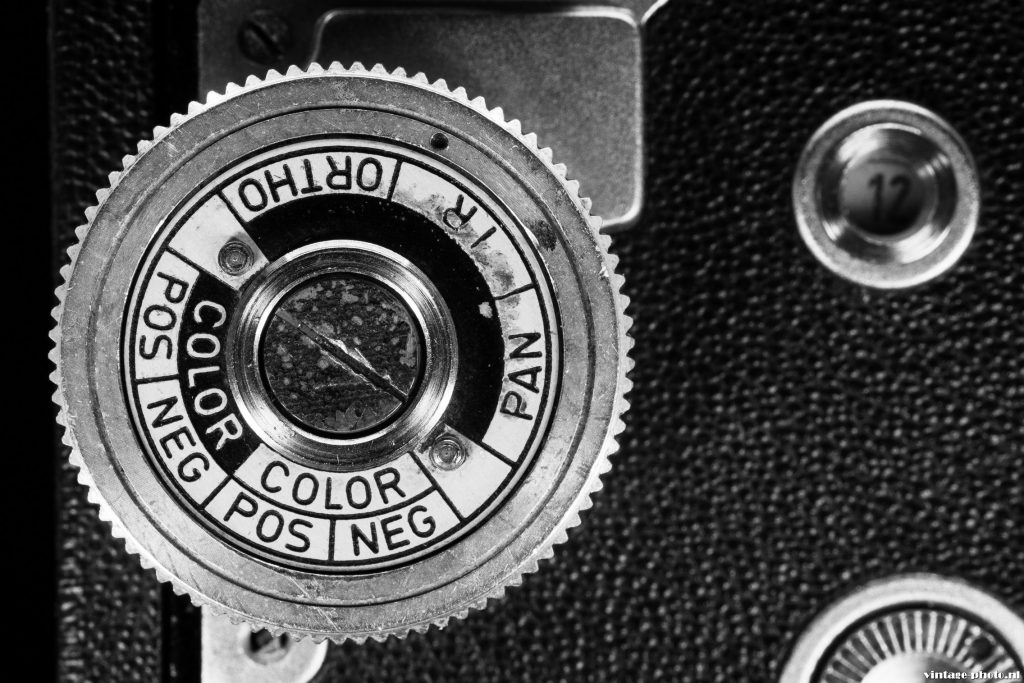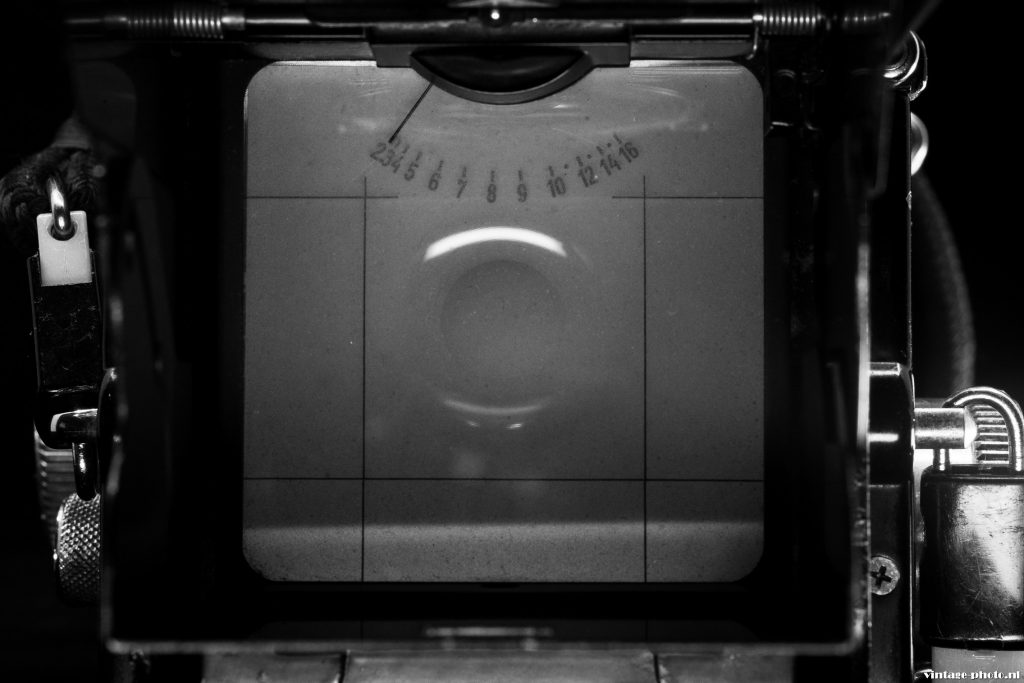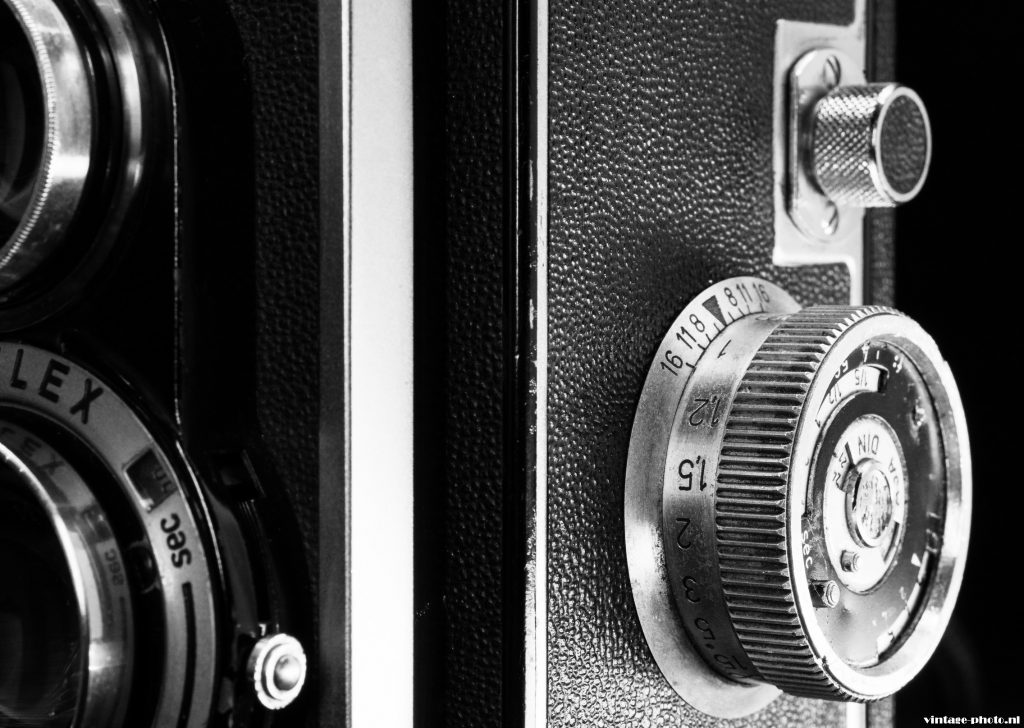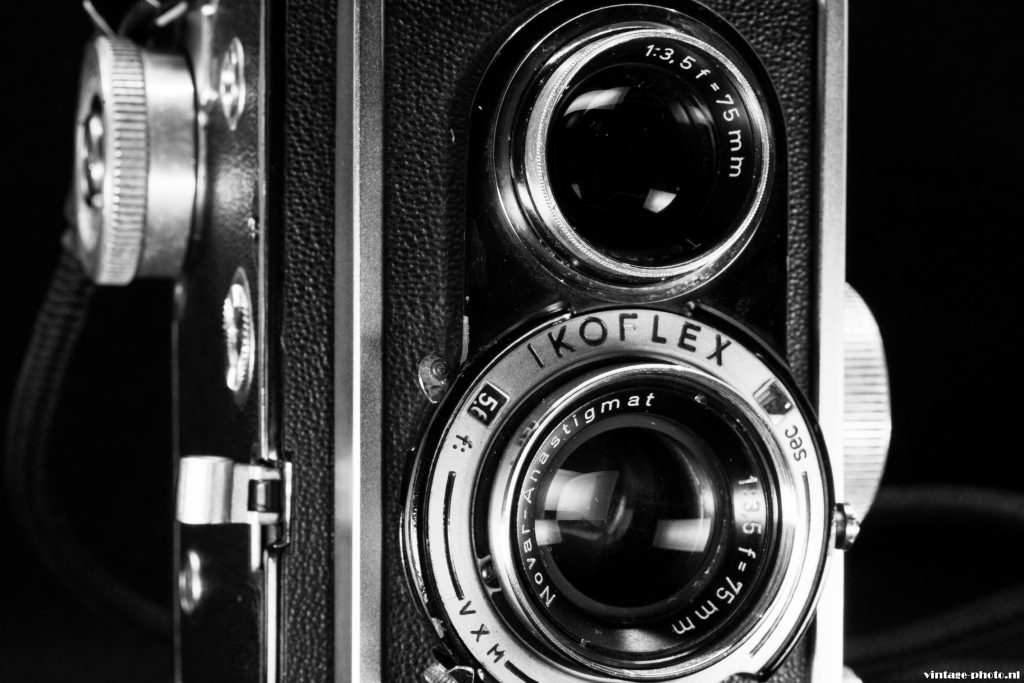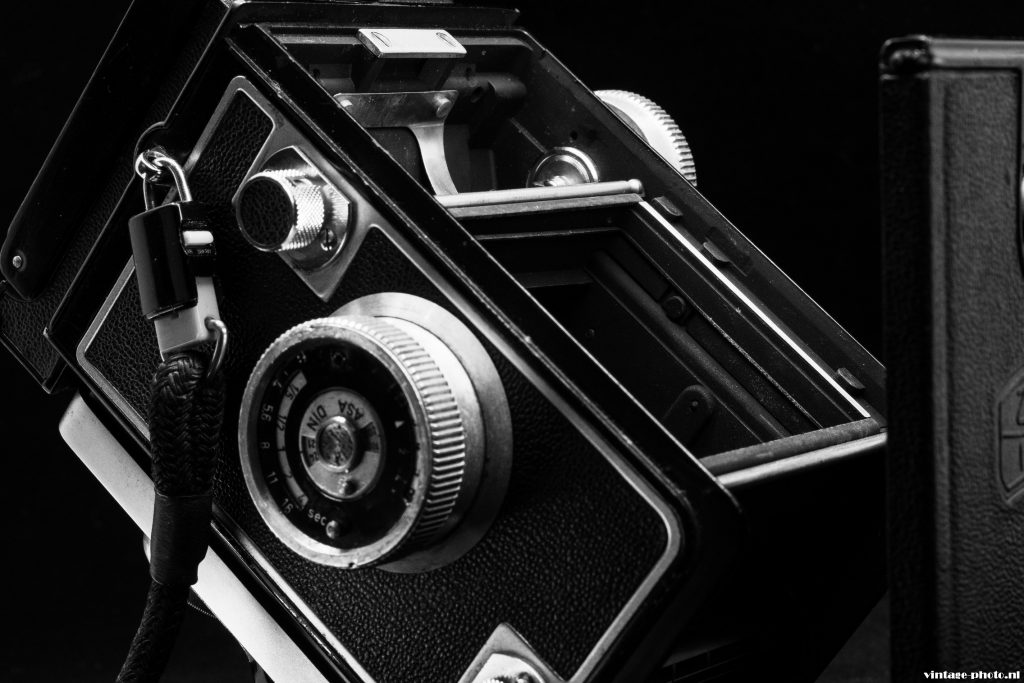Zeiss Ikon does not have the most popular name in the TLR segment. This is unjustified, as the range of models has been great since 1935 with the introduction of the Contaflex TLR. More famous are the 14 successors, all of which appeared under the name Ikoflex. Solid cameras up to the final model, the Ikoflex Favorit in the late 1950s. Before that there was the famous Ikoflex 1c which was the first to have an advanced LVS exposure meter. A complete working model is however hard to find. Something seems always broken.
When you think of TLR, you think of Rolleiflex. Or Rolleicord, Mamiya, Yashica. They have always dominated this particular camera segment. The waist-level ‘two-eyed’ cameras. They always stand out because everyone thinks you have to do some very special things to take a picture. Usually large and heavy cameras with what is called the lower ‘take-up’ lens and a focus lens above it, and usually this is of the same or nearly the same quality. Using the Ikoflex 1c from 1956 onwards, we go over the special characteristics of this TLR camera. My model unfortunately no longer has a working film counter. This complicated construction, which did make the camera extra popular, also proved to be fragile and pretty uncomfortable to use in practice. The idea is that you no longer need to read the film numbers through a red window on the backing paper of the roll of film. A sophisticated combination of gears rotates with the film winder and displays the numbers 1-12 in a viewing window on the side. But in practice, it must be properly reset after each film if it is to work (with the little knob below the frame counter). Otherwise you quickly waste film. Moreover, this system proved to be sensitive to misalignment, making the spacing between the photos inaccurate.
So I am not that unhappy to keep having to open the red peephole under the camera to wind the film precisely. The windknob contains a memory wheel for marking the type of film. On this side there is also the PC-sync connection for the flash. This is suitable for both electronic flash (X) and flash bulbs (M). And because the Ikoflex has a leaf shutter, all times can be synchronized with the flash. Furthermore, on the right side is the shutter button -that must first be switched to the right- that only works when the shutter is cocked on the lens. It is also linked to and blocked by the frame counting system to eliminate double exposures . But as mentioned, if this one doesn’t work, like with many Ikoflexes, the shutter may not work properly either. In my case, the gear from the counting system was therefore removed inside (by the way, this is easily done by opening the side via the five screws in the corners under the leather). After that, everything should work properly, but without the automatic frame counter. What can be found on the other side? Other than the focus knob nothing really. There are two more buttons, meant to be pulled out so the film can be inserted. The focus knob can be set between about 1 meter and 16 meters and infinity. This knob turns rather short and needs less than half a rotation from far to near. For very precise focusing, that’s feels a little bit short.
On the focus button we find next to the ISO settings an interesting scale, namely the conversion of the LVS values to the appropriate apertures and shutter speeds. LVS? In 1954, Friedrich Deckel, creator of the famous Compur leaf shutter, devised a universal exposure system between cameras. It was still always difficult for consumers to understand the (combined) operation of shutter speeds and apertures. And because they were virtually the same for every camera, Deckel devised a new simple table with universal light values, the Light value Scale. This ran for practical use in cameras from the numbers 2-18. Thus, the exposure meter directly indicates one concrete number that relates to particular right combinations of shutter speed and aperture given the available light. On the Ikoflex, the value of the exposure meter can be transferred to a dial on the focus button that indicates these combinations. As a user, you then only have to think about the depth of field you want to create. This innovation did not prove very successful. Camera manufacturers tried to automate this scale into combined aperture/shutter settings in the shutter of the lens. We see the emergence of coupled rings in lens shutters throughout the 1950s. These had to be in sometimes complex ways disconnected again, for example in shady situations where the aperture had to be maintained (e.g. portrait) and only the shutter speed needed adjustment. Finally, the LVS metering system disappeared after only a few years. Yet in this vintage Ikoflex it is precisely interesting to experiment with this LVS system. For this purpose I use an additional handheld Ikophot, a manual exposure meter from Zeiss Ikon that also measures LVS. On this meter you can find all possible combinations and quickly adjust them by e.g. measuring the shadows and adjusting them with the found LVS values. And that brings us to the top of the camera with a protruding viewfinder. On the frosted glass, the LVS values are clearly visible and a still working silicon cell (which must be flipped open at the front) moves the needle very precisely over the values. The corresponding shutter speed and aperture can then be read off the focus knob and transferred to the lens.
The Teronar F3.5/75 mm focusing lens is exceptionally sharp and bright enough to focus well. The Ikoflex has a large magnifying glass to do that very precisely. Than there is the Novar F3.5/75mm take up lens. In fact, there is much debate whether the Tessar (which holds the better technical cards) is really ‘better’ than the cheaper Novar. The latter offers very good quality and instinctively more character for many photographers. For the TLR series, Zeiss Ikon paid great attention to shaping the shutter speeds and aperture scales, which are neatly concealed in small viewing windows. Unfortunately, the shutter speeds are not that impressive, up to 1/300s maximum. The aperture reduces to a maximum of F16.
On the Prontor shutter, you can furthermore set the self timer and the flash sync. The lenses are coated. The solid back can be easily opened for effortless insertion of the 120 film that runs from bottom to top. The Ikoflex has found a place between my Rolleicord V and Mamiya C3, two excellent TLRs, but this Ikoflex is very special (unique) due to the exposure meter. In comparison, the camera is a bit more compact and playful, as we have come to expect from the designers at Zeiss Ikon. As soon as the pictures are ready, they will be added to this review.


